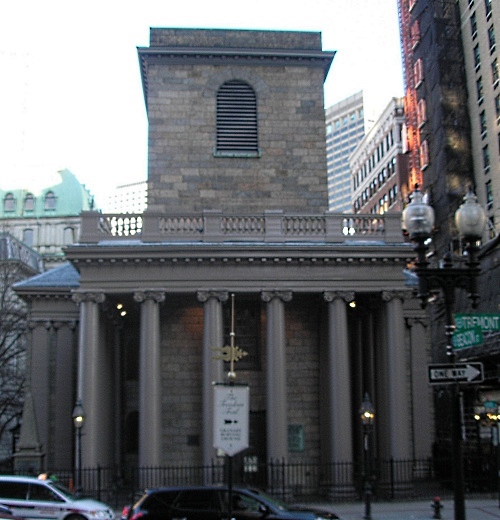King’s Chapel, Boston (1749)

King’s Chapel, originally founded to serve British officers, was the first Anglican church in Puritan Boston. The Chapel‘s first building was a wood structure, built in 1686 on land that had been part of the town’s oldest burying ground. The current Chapel, built of Quincy granite, was constructed around the old one in 1749-1754 (the dismantled remains of the old church were then removed through the windows). The architect was Peter Harrison, of Newport, RI, considered to be America’s “first architect,” who modeled the Georgian-style building on those designed by James Gibbs in England, like St. Martin in the Fields in London, except the steeple of King’s Chapel was never built due to a lack of funds. When the British evacuated Boston during the Revolutionary War, there were few Anglican families remaining in town. James Freeman, a lay reader, became minister in 1783 and led Stone Chapel (as King’s Chapel had come to be called) to become America’s first Unitarian church in 1789 (although the congregation continued to follow a liturgy based on the Book of Common Prayer). That same year, George Washington attended an oratorio at the Chapel intended to raise funds for the construction of a portico of wood Ionic columns, painted to resemble stone. When the Chapel’s bell cracked in 1814, it was recast by Paul Revere. Both the Chapel and the adjacent King’s Chapel Burying Ground are on the Boston Freedom Trail.
I have a choir and orchestra, Campo Verde High School that is in the Boston area.
Would you allow them to do a 20 min. performance in your Chapel on Friday, March 24th at 10am? 90 Students and Chaperones, no audience needed.
Please reach out to me on my cell..417.294.7503
Sound Education Programs, Mesa, AZ
Teina Woodburn